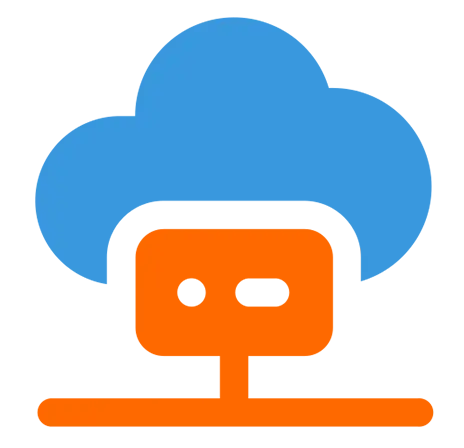 Server
Colocation
Server
Colocation
 CDN
Network
CDN
Network
 Linux Cloud
Hosting
Linux Cloud
Hosting
 VMware Public
Cloud
VMware Public
Cloud
 Multi-Cloud
Hosting
Multi-Cloud
Hosting
 Cloud
Server Hosting
Cloud
Server Hosting
 Kubernetes
Kubernetes
 API Gateway
API Gateway

The choice between NVIDIA's RTX and GTX graphics cards depends on your performance needs, budget, and use case. RTX cards offer advanced features like real-time ray tracing and AI-powered enhancements (e.g., DLSS), delivering superior graphics quality and higher frame rates—ideal for gamers and professionals seeking cutting-edge visuals and future-proof technology. GTX cards, while lacking these advanced features, provide solid, cost-effective performance suitable for casual gaming and less demanding workloads. For cloud GPU solutions, Cyfuture Cloud offers customizable options for both GTX and RTX GPUs to match diverse performance and budget requirements.
NVIDIA's GTX (GeForce GTX) series has long been valued for reliable, traditional rasterized graphics rendering suitable for mainstream gamers and budget-conscious users. Introduced more recently, the RTX (GeForce RTX) series revolutionized GPU technology with dedicated hardware for real-time ray tracing and AI capabilities that significantly elevate visual fidelity and performance in supported applications and games. Understanding these differences is crucial to selecting the right GPU for gaming, professional workloads, or cloud deployments.
1. Ray Tracing Hardware: RTX cards contain RT Cores for real-time ray tracing—simulating realistic lighting, shadows, and reflections—while GTX cards lack dedicated ray tracing hardware, limiting their ability to support these effects fully.
2. AI Enhancements: RTX GPUs include Tensor Cores that power AI-driven technologies like Deep Learning Super Sampling (DLSS), which can improve frame rates and visual quality simultaneously. GTX GPUs do not support these AI features.
3. Architecture and Performance: RTX cards use advanced architectures such as Turing and Ampere, offering greater CUDA core counts and optimized computational capacity. GTX cards, often based on older Pascal architecture, lack these enhancements.
RTX GPUs consistently outperform GTX GPUs in both raw computing power and modern game compatibility, especially at higher resolutions (1440p and above). Ray tracing and DLSS allow RTX cards to render more immersive visuals without compromising performance. Conversely, GTX GPUs remain effective for 1080p gaming and less graphically intensive workloads but will show limits in ray-tracing-enabled games and AI-based rendering improvements. For professional AI workloads and 3D rendering, RTX GPUs offer noticeable advantages due to specialized cores.
|
Feature |
RTX Cards |
GTX Cards |
|
Ray Tracing (RT Cores) |
Yes, hardware-accelerated |
No |
|
AI Acceleration (Tensor Cores) |
Yes, supports DLSS and AI tasks |
No |
|
Architecture |
Turing, Ampere (advanced) |
Pascal (older) |
|
Typical Use Case |
High-end gaming, 3D rendering, AI |
Budget gaming, basic graphics |
|
Pricing |
Premium price, future-proof |
More affordable |
GTX graphics cards are generally less expensive, making them attractive for users with limited budgets who prioritize smooth gameplay over the latest visual effects. Meanwhile, RTX cards carry a premium cost but justify it by enabling groundbreaking graphics technology that enhances both current and future gaming and professional workloads. The decision often depends on whether you want the best possible visuals and longevity or a balanced system that meets basic needs effectively.
> Choose RTX if: You play modern AAA games with ray tracing support, work with 3D modeling or AI workloads, desire cutting-edge graphics fidelity, or seek future-proof hardware.
> Choose GTX if: You’re a casual gamer, on a budget, playing less demanding titles, or using your GPU for everyday tasks not requiring ray tracing or AI acceleration.
> Cloud Users: Both GPU types are available for cloud virtualization and AI workloads via platforms like Cyfuture Cloud, where choice is driven by workload demands and budget optimization.
Cyfuture Cloud offers a wide range of GPU options tailored for different workloads. Whether users require cost-effective GTX-based cloud instances for virtualization and gaming or powerful RTX-based instances for AI inference, real-time graphics rendering, and professional 3D workflows, Cyfuture Cloud delivers scalable infrastructure to optimize both cost and performance. This flexibility ensures customers can select the perfect GPU solution that aligns with their specific needs and budget constraints.
Q1: Can GTX GPUs run ray tracing games?
A: GTX cards can run ray tracing, but without dedicated RT cores, performance will be significantly lower and less visually impressive compared to RTX GPUs, which have hardware-accelerated ray tracing.
Q2: What is DLSS, and why does it matter?
A: DLSS (Deep Learning Super Sampling) uses AI to upscale lower-resolution images to higher quality, improving frame rates without sacrificing graphics quality. This feature is exclusive to RTX GPUs and benefits gaming smoothness and visual fidelity.
Q3: Which GPU is better for AI and deep learning workloads?
A: RTX GPUs are superior for AI tasks due to their Tensor Cores that accelerate machine learning computations, whereas GTX GPUs lack this specialized hardware.
Selecting between NVIDIA's RTX and GTX graphics cards ultimately hinges on balancing budget versus performance needs. RTX cards represent the future of GPU technology with real-time ray tracing, AI-driven features, and higher overall performance, perfect for gamers and professionals seeking top-tier visuals and computational power. GTX cards remain a sensible choice for budget-conscious users and those with less demanding graphical requirements. For cloud users and enterprises, Cyfuture Cloud provides flexible GPU options spanning both RTX and GTX lines, ensuring tailored solutions that optimize both efficiency and cost.

Let’s talk about the future, and make it happen!
By continuing to use and navigate this website, you are agreeing to the use of cookies.
Find out more


